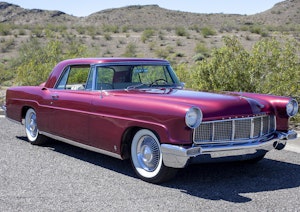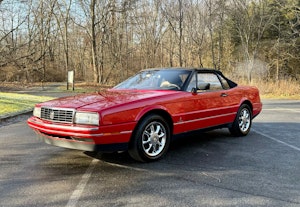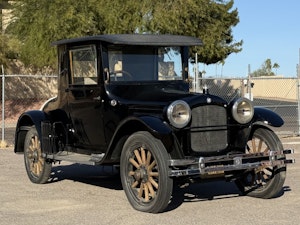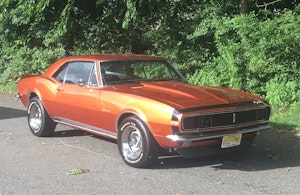People appreciate honesty, and sometimes the reward is a free car
I’ve written stories about getting a free BMW 635CSi, about passing on a highly-modified BMW 2002tii that sounded like a sure thing, and about how buying back a car I once owned, which required a week of work to extract it from an inaccessible garage. Have a seat, I’m about to tell you about the time I turned down a rusty, dead BMW 2002tii tribute car, then wound up getting the car for free a year later. Normally, there’s no such thing as a free boat, a free dog, or a free car, but this one may be the exception.
About a year ago, I answered an interesting-sounding Craigslist ad. The ad read, “BMW 2002,” but one of the photographs clearly showed the fuel-injected motor from the more-valuable 2002tii. Although the ad candidly stated that the car was dead, rusty, and best for parts or restoration, the main photograph showed a pretty decent-looking car. I called the seller, asked him a bunch of tii-related questions, and learned that he didn’t know much about the details of the car.
You never know what a car actually is unless you look for yourself, so I drove to Brockton, Massachusetts, about 30 miles south of me. I found that the car wasn’t a real 2002tii, but a “faux” tii, sometimes called a “tribute car.” It had the tii fuel-injected motor, the tii front strut housings with the bolt spacing for the big brake calipers, the tii brake booster, even the tii-specific clock in the dash, but it did not have the correct VIN and was missing the tii-specific brazed-on mounts for the air cleaner and the fuel pump. I explained all this to the seller, while advising him that certain tii parts are quite valuable. The tii front strut housings, for example, are no longer available new, and BMW wants $1500 per side for rebuilt ones.
At the time, I passed on the car. I couldn’t quite remember why, but it must’ve been pretty bad, as I didn’t give it a second thought. It’s funny how, with certain cars, I can remember exactly what caused me to pass on them. Even years later, for example, I can still picture the rust on the inside of the frame rail on an early ’68 BMW 2002 I was interested in. This one was probably rusty enough that I determined it was clearly a parts car, something I don’t need, don’t want, and don’t have the room for. But no big deal. I look at a lot of cars. This one didn’t stick out. It certainly wasn’t one of those cars I hemmed and hawed over, then lost to someone more decisive and regretted it.
A year later, in late April, I got an email from the seller: “Hey Rob, I had my 2002 on Craigslist and you stopped by my house in Brockton. I am ready to get rid of it if you are interested.” I thanked the owner but responded politely that I currently had 11 cars and no space, and resurrecting my Lotus had bled me of all available cash.
Marketplace
Buy and sell classics with confidence
But then he replied that I didn’t understand. “It’s free if you want it. I just want it to go to someone who likes BMWs.”
Well, then, as they say, that’s different. This is one of the reasons why, when I look at a car, I share all information with the seller, even if it undercuts my negotiating position. People appreciate being spoken to honestly. I’ve had other folks come back to me months or years later, saying they thought I was the right buyer and wanting to work something out, but this was the first time anyone had reciprocated with the offer of a free car.
So, I said yes. Wouldn’t you? You say “no” to something like this, and The Great Automotive Powers That Be won’t drop anything in your lap ever again.
The first thing I did was search for photos. I photograph most cars I look at, since I never know when the pics might be useful in an article or for reference. I was surprised that all I could find of the faux tii was the Craigslist screen shot. That picture, though, did answer the question about why I didn’t make any offer on the car: The seller was very clear that he wanted a firm $2000 for it. I will at times violate etiquette, particularly if the seller is asking a crack-pipe price, but here, I wasn’t interested. (Well, at least not until the price reached zero.)

Next, I worked the logistics. For many years, I owned a succession of Suburbans. They were mainly family vacation vehicles, but with the addition of a $59/day U-Haul auto transporter, I also used them to haul cars. Without the ’Burb, it’s a little more complicated. But, fortunately, I have friends with trucks and trailers. I’d recently given my friend Tom a BMW 2002 steering box, and in gratitude he’d offered me use of his rig the next time I needed it. So I called Tom, played my steering-box-for-free-tow card, and we arranged to pick up the faux tii the last Sunday in April.
I contacted the owner again to tell him the schedule. I said that I recalled the car was in his backyard and asked what the impediments were. He said that the car had been moved to a spot closer to his driveway, but it did now have a flat tire. I told him I’d bring a spare wheel and tire and said Tom’s trailer had a winch, so if need be we could drag the car out from where it was.
I met Tom at the owner’s house in Brockton. The good news was that it was a straight shot from where the car was now (under a makeshift canopy) down to the driveway. The bad news was that the house was on a hill, the front yard was pretty steep, and I wasn’t sure we could back Tom’s trailer up the hill to use the winch.

I changed the flat tire, then the three of us rocked the car back and forth until the brakes freed up. The car rolled well enough that we became concerned about not being able to slow it down as it went down the hill in the front yard. I got in the car to check the brakes, and the first thing I noticed was that the brake pedal was already down at the floor.
Actually, that’s not quite true. The brake pedal was already down at the floor, but that wasn’t the first thing I noticed. The first thing I noticed was that most of the interior was missing; there was a driver’s seat but little else. The passenger side floor was exposed, and I was face-to-face with a rust hole big enough for Fred Flintstone to do his thing.

The looming hill was cause for concern, as the brake pedal did nothing and it was unclear how well the handbrake worked. It was then that Tom noticed that the street ran slightly uphill. He suggested that, with one person acting as a traffic spotter, we simply roll the car down the hill in the front yard and, with me at the wheel, I turn in the direction of the uphill slant of the street. This should cause the car to naturally slow to a halt. As the dead faux tii barreled down the hill, I felt like a child going down a hill in a red Radio Flyer wagon and not sure it was going to stop. Fortunately, all went according to plan and the car came to a halt on the street. We then rolled it backward until it was within dragging distance of the trailer’s winch cable. Compared with the week-long process of extracting my old car “Bertha” from the landlocked rear-facing bottom-of-a-hill garage of my friend to whom I’d sold it in 1990, this was cake.
With the car on the street, I could examine it. It didn’t look that bad. Yes, the floors were fully ventilated, but it looked like someone had begun dealing with the body issues. It had a used replacement hood and recently-replaced rocker panels. I began to wonder… did I get it wrong last year? Was I getting something that was more than just a parts car?



It began to rain, so I curtailed my examination and Tom and I began winching the car into the trailer. Then the owner said, “I have some other parts if you want them.” He took me back to the canopy structure and pointed at the rafters. Above was a set of rust-free front fenders, a trunk lid, and a door, all from the same red car that the hood was from. To complete my incredibly good fortune, the owner produced a title and a set of keys. Lastly, he offered that the engine had burbled to life on starting fluid last year.

About an hour later, Tom and I unloaded the car in the rain at my house. It was a few days before I could look at it closely. When my driveway dried out, I examined the booty.
The rust in the floor was much worse than I’d thought. A previous owner had tried to patch it with untreated sheet metal both inside and underneath the car, forming what was sort of a rust sandwich.

In addition, rust had formed under the rear seat where the rear subframe bushings attach to the body of the car. It had already been repaired once. People know to check the rear shock towers on old cars, but the rear subframe attachment point is just as important.

But the central issue was the left front frame rail. It was rotted and crushed. It’s not that you can’t replace a frame rail, but unless the rest of the car is intact, it’s generally not worth it.

With that, it was clear: It’s a parts car. I’d gotten it right a year ago. I still have no desire to part out a car—even in addition to the work required to strip it, the problem is that the volume explodes; there’s no smaller container for parts than leaving a parts car intact. It’s taken on a life of its own, however. I’ve already raided it for multiple parts for the other 2002s. At the moment it’s hiding at the end of the driveway behind the RV, but that can’t go on forever. I’ll probably try to get the injected tii engine running, video it if I do, and see if I can find a buyer who’d pull the engine themselves as part of the sale.
Or maybe, since I passed this test, the Great Automotive Powers That Be will drop a 2002tii in need of an engine in my lap. Maybe the one with the same VIN as this tii engine.
***
Rob Siegel has been writing the column The Hack Mechanic™ for BMW CCA Roundel magazine for 30 years. His most recent book, Just Needs a Recharge: The Hack Mechanic™ Guide to Vintage Air Conditioning, is available on Amazon (as are his previous books). You can also order personally inscribed copies here.









